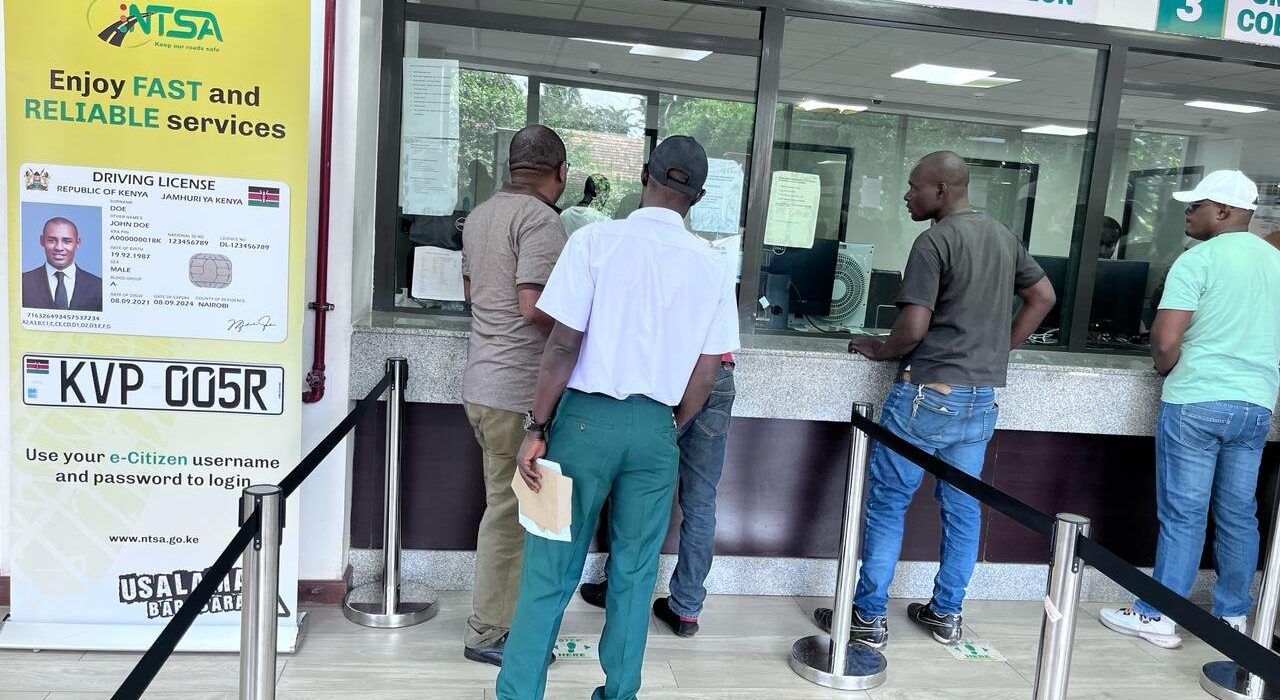In the bustling streets of Nairobi, where matatus honk their way through traffic and bodaboda riders weave between lanes, owning a vehicle isn’t just a luxury—it’s often a lifeline for business and daily hustle. But with rising fuel costs and economic pressures, many Kenyans turn to asset financing to get behind the wheel. Enter the NTSA asset financing incharge process, a crucial step that secures lenders’ interests while empowering borrowers to drive their dreams forward. As of 2025, with vehicle registrations climbing despite economic headwinds, understanding this procedure is key for anyone eyeing car loans or vehicle-backed financing in Kenya.
This comprehensive guide dives deep into the NTSA incharge process, unpacking everything from eligibility to charges, with a focus on the latest updates for Kenyan road users. Whether you’re a first-time buyer in Mombasa or a fleet operator in Kisumu, we’ll walk you through the steps, highlight potential pitfalls, and share insider tips to make your application seamless. Drawing from official NTSA guidelines and recent transport sector data, this article equips you with the knowledge to navigate the system confidently.
Understanding NTSA Asset Financing Incharge: What It Really Means
At its core, the NTSA asset financing incharge is the official registration of a security charge on a vehicle’s logbook, signaling that a lender has a financial stake in the asset. This process, often simply called “incharge” in Kenyan transport circles, protects financiers like banks or micro-lenders from default risks while allowing borrowers to use the vehicle for income generation—think of it as a digital lock on the logbook until the loan is cleared.
In Kenya’s context, where vehicle financing fuels everything from personal commutes to commercial operations, this mechanism is embedded in the Transport Integrated Management System (TIMS). It’s not just paperwork; it’s a legal safeguard under the Movable Property Security Rights Act, ensuring transparency in an industry that’s seen explosive growth. For instance, with over 2.1 million registered vehicles nationwide as of recent figures, and new registrations hitting peaks like 7,447 station wagons in early 2025, the incharge process has become indispensable for securing car loans amid fluctuating sales trends.
Why does this matter? Without proper incharge registration, lenders could face disputes during repossession, and borrowers might struggle with resale or transfer. It’s a win-win that aligns with Kenya’s push for digitized services via eCitizen, reducing fraud and speeding up approvals.
The Role of NTSA Incharge in Kenya’s Booming Vehicle Financing Landscape
Kenya’s transport sector is a powerhouse, contributing significantly to GDP through logistics, public service vehicles (PSVs), and personal mobility. Asset financing has democratized access, with lenders offering up to 80% coverage on vehicle values for everything from sedans to tuk-tuks. Yet, economic challenges like thin payslips and high loan costs have led to a 43% dip in car registrations in the first nine months of 2025 compared to prior years, making efficient processes like NTSA incharge more vital than ever.
For bodaboda operators in Eldoret or matatu owners in Thika, incharge ensures that financed assets remain productive without ownership hassles. Legally, it’s mandatory for any secured vehicle loan, preventing unauthorized sales and providing recourse in defaults. Benefits include:
- Lender Security: Reduces risk, leading to lower interest rates for borrowers.
- Borrower Flexibility: Vehicles can be used immediately, boosting income streams.
- Market Growth: Supports the surge in sales, with Q1 2025 seeing a 72.9% recovery in vehicle purchases.
- Regulatory Compliance: Aligns with NTSA’s mission to enhance road safety and transport efficiency, as seen in their ongoing digitization efforts.
In a country where over 1.6 million vehicles were on roads back in 2011 and numbers have only ballooned since, mastering this process isn’t optional—it’s essential for sustainable financing.
Eligibility Criteria and Required Documents for NTSA Incharge Application
Before diving into the application, ensure you qualify. Typically, eligibility hinges on being a registered vehicle owner or authorized financier in Kenya. Both parties must have active eCitizen accounts, as the process is fully online via the NTSA portal.
Key requirements include:
- Vehicle Ownership Proof: A valid logbook (NTSA-issued blue book) in PDF format.
- Identification: National ID or passport for individuals; company registration certificates for businesses.
- Financing Agreement: Details of the loan or asset financing contract.
- Vehicle Details: Registration number, make, model, and engine capacity.
No specific credit score is mandated by NTSA, but lenders often conduct their checks. For PSVs or commercial vehicles, additional compliance with road safety standards may apply. Always verify via the TIMS portal to avoid rejection.
Step-by-Step Guide to the NTSA Asset Financing Incharge Process
The beauty of the 2025 NTSA system lies in its digital simplicity, but it requires precision. The process involves two main actors: the vehicle owner (or seller/borrower) and the client (financier/lender). Here’s how it unfolds, based on official guidelines.
For the Vehicle Owner/Borrower
- Log In to eCitizen: Start by accessing your eCitizen account at ecitizen.go.ke. If you’re new, register with your ID details—it’s quick and free.
- Access NTSA Portal: Select the “NTSA Service Portal (New)” from the dashboard. This integrates with TIMS for seamless vehicle management.
- Switch to Incharge Mode: Navigate to “Switch Account” and click on “In-Charge.” This mode is tailored for charge registrations.
- Enter Vehicle Details: Input the vehicle’s registration number (e.g., KAB 123A) and hit “Search.” The system pulls up existing records to verify.
- Fill Owner Details and Upload Documents: Provide your personal info, then upload a scanned PDF of the logbook. Ensure it’s clear and colored—blurry files lead to rejections. Click “Next” to proceed.
- Choose Collection Center: Select your preferred NTSA center for any physical pickups, like Nairobi HQ or regional offices in Nakuru.
- Declare and Preview: Scroll to the declaration box, tick it to confirm accuracy, then preview your application for errors.
- Submit and Pay: Finalize by submitting, which triggers the payment prompt. Complete the transaction to lock in your request.
For the Client/Financier
Once the owner initiates, the lender steps in:
- Log In to eCitizen: Use your own account—lenders often have business profiles.
- Select NTSA Portal: Choose “NTSA Service Portal (New)” again.
- Handle Consent Notification: On the home page, accept or decline the consent notification. This verifies your role in the financing.
- Submit for Approval: Forward the application to NTSA for final vetting.
This dual-step ensures both parties consent, minimizing disputes. Pro tip: Coordinate timings to avoid delays.
NTSA Incharge Charges and Payment Options in 2025
Cost is a big concern for Kenyan borrowers, and thankfully, the NTSA incharge fee remains affordable at Ksh 1,175. This covers administrative processing and is non-refundable. Payment is via eCitizen’s integrated options: M-Pesa, card, or bank transfer—no cash at counters anymore.
Compare this to other NTSA services: Forced transfers range from Ksh 2,210 to higher based on engine size, while standard registrations hover around Ksh 3,000–7,000. Factor in lender-specific fees, like tracker installations at Ksh 4,000–7,500, for a full picture.
In 2025, with inflation biting, budgeting for these is smart—especially as vehicle sales recover but costs linger.
Processing Timeline: From Application to Approval
Patience is key in Kenyan bureaucracy, but NTSA has streamlined things. The official timeline is 3 working days from submission, though real-world experiences vary from 2–5 days depending on system load.
Track progress via eCitizen notifications or TIMS dashboard. Delays? Common culprits include peak periods or incomplete uploads. Once approved, the charge appears on the digital logbook, ready for financing activation.
Common Mistakes in NTSA Incharge Applications and How to Dodge Them
Even seasoned drivers slip up here. Drawing from NTSA alerts, here are pitfalls to avoid:
- Document Errors: Uploading wrong logbooks or black-and-white scans instead of colored PDFs. Solution: Double-check files before submission.
- Incorrect Details: Mismatched owner info or typos in registration numbers. Fix: Verify against physical documents.
- Missing Deadlines: Failing to complete within lender timelines, leading to lapsed applications. Tip: Start early and set reminders.
- System Glitches: TIMS errors like login failures. Remedy: Clear cache or try off-peak hours.
- Overlooking Consent: Financiers forgetting to accept notifications. Coordinate via email or calls.
By sidestepping these, you’ll save time and frustration—NTSA reports thousands of rejections annually from such oversights.
Expert Tips for a Hassle-Free NTSA Incharge Experience
To make your journey smoother than a drive on the Thika Superhighway:
- Prep Digitally: Scan documents in advance; use apps like Adobe Scan for quality PDFs.
- Coordinate Parties: If you’re the borrower, loop in your lender early—shared access speeds things up.
- Monitor Updates: Follow NTSA on X for real-time alerts on system changes.
- Seek Help if Stuck: Visit NTSA offices or use their helpline (0709 932 000) for guidance, but apply online first.
- Budget Beyond Fees: Account for ancillary costs like insurance or valuations in your financing plan.
- Go Green: For EV financing, leverage 2025 incentives that tie into incharge processes.
These strategies, honed from user experiences, can turn a tedious task into a breeze.
Frequently Asked Questions About NTSA Asset Financing Incharge
- What’s the difference between incharge and discharge? Incharge registers the lien; discharge removes it post-loan repayment.
- Can I apply offline? No, it’s fully digital since 2020 updates.
- What if my application is rejected? Check error messages, correct, and resubmit—no extra fees if quick.
- Is incharge required for all loans? Yes, for vehicle-secured financing to comply with NTSA rules.
- How do I check status? Log into TIMS or eCitizen for updates.
Navigating the NTSA asset financing incharge process might seem daunting at first, but with the right steps and preparation, it’s a straightforward path to securing your wheels. In a nation where vehicles power livelihoods—from the bustling ports of Mombasa to the farmlands of Kitale—this tool ensures fair play in financing. As Kenya’s transport sector evolves, with registrations rebounding and digital services advancing, staying informed keeps you ahead.
If you’re ready to apply, head to eCitizen today. Remember, safe roads start with smart decisions—drive responsibly, and let NTSA handle the rest. For more Kenyan transport insights, stay tuned to ntsanews.co.ke.





